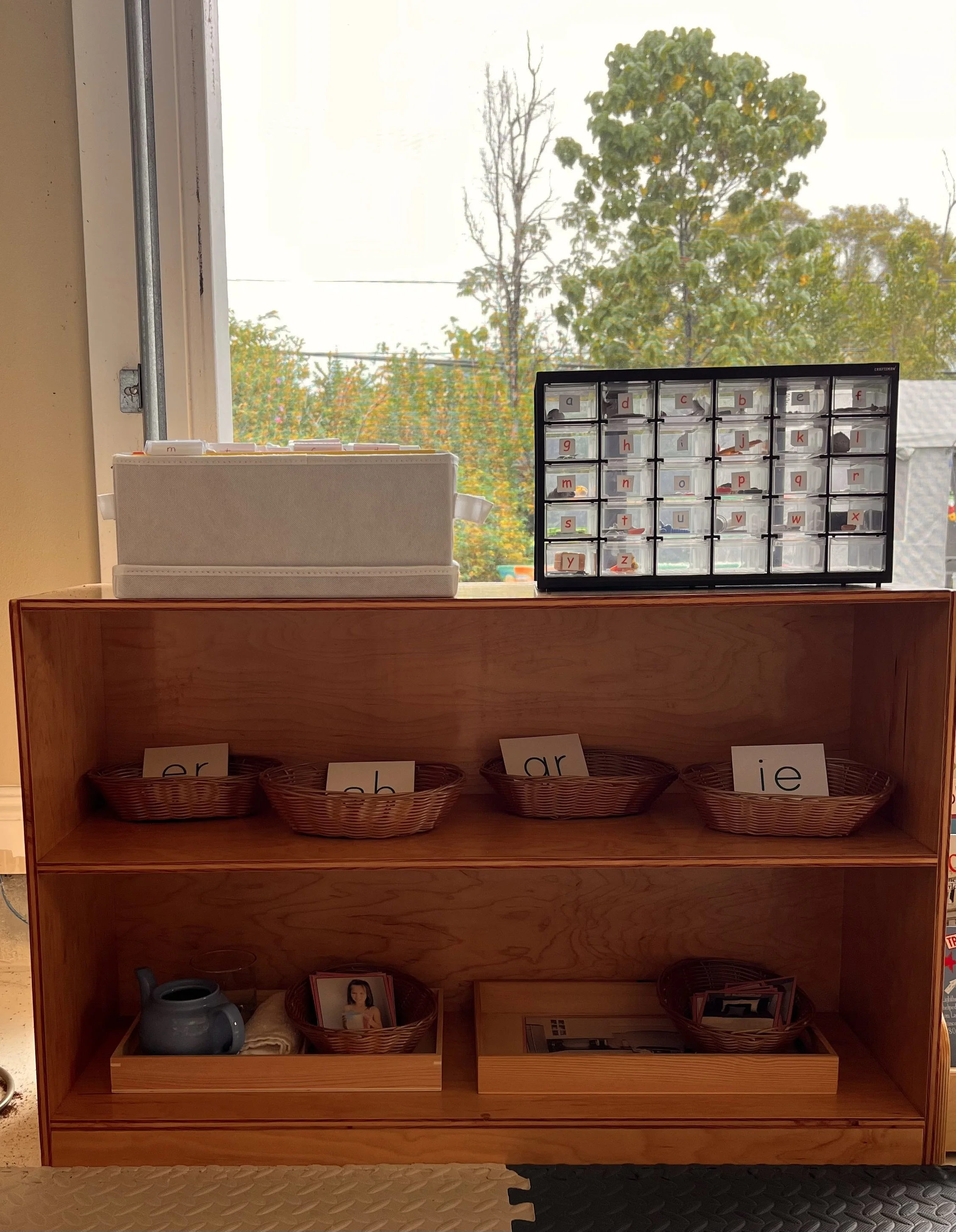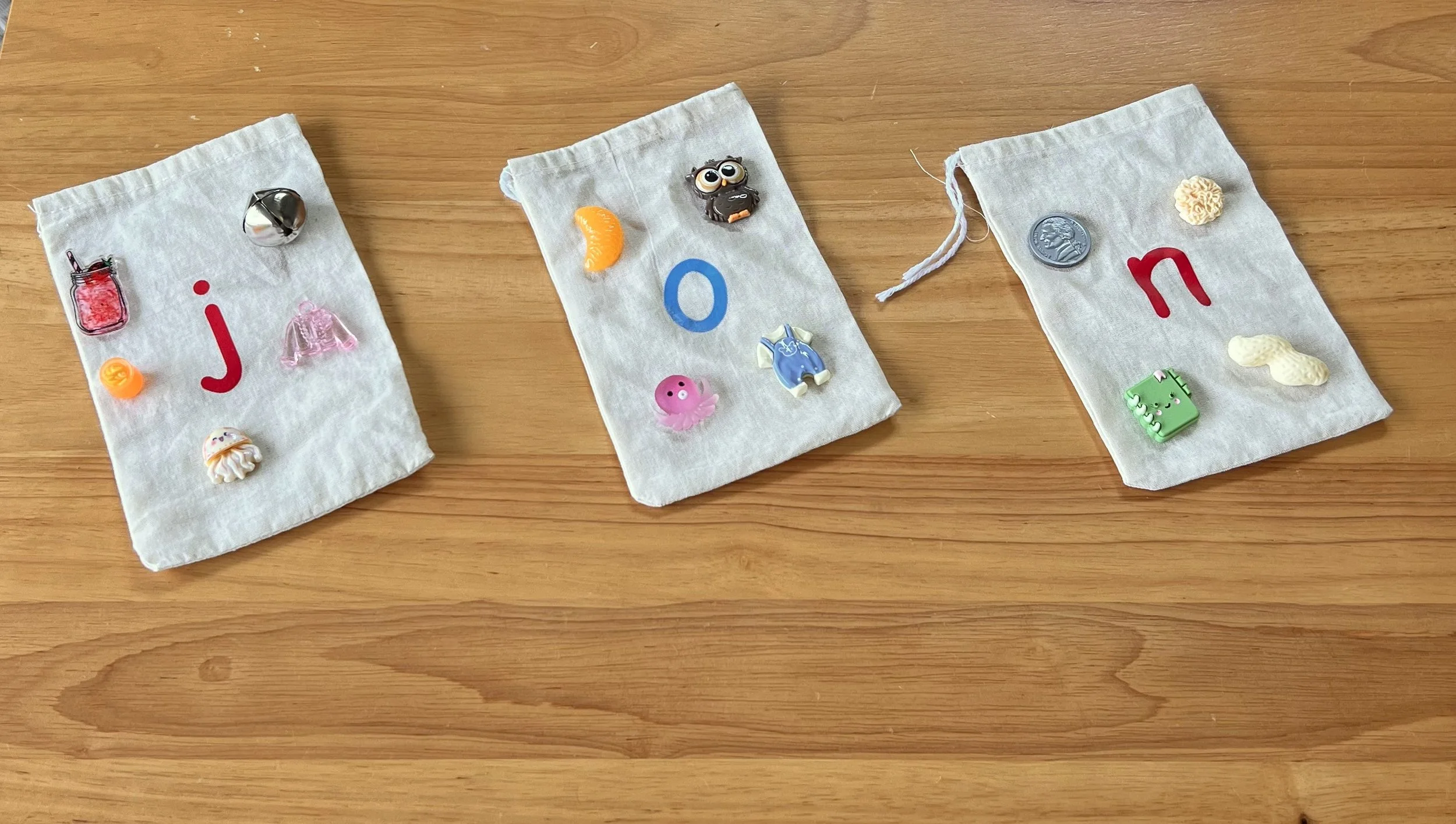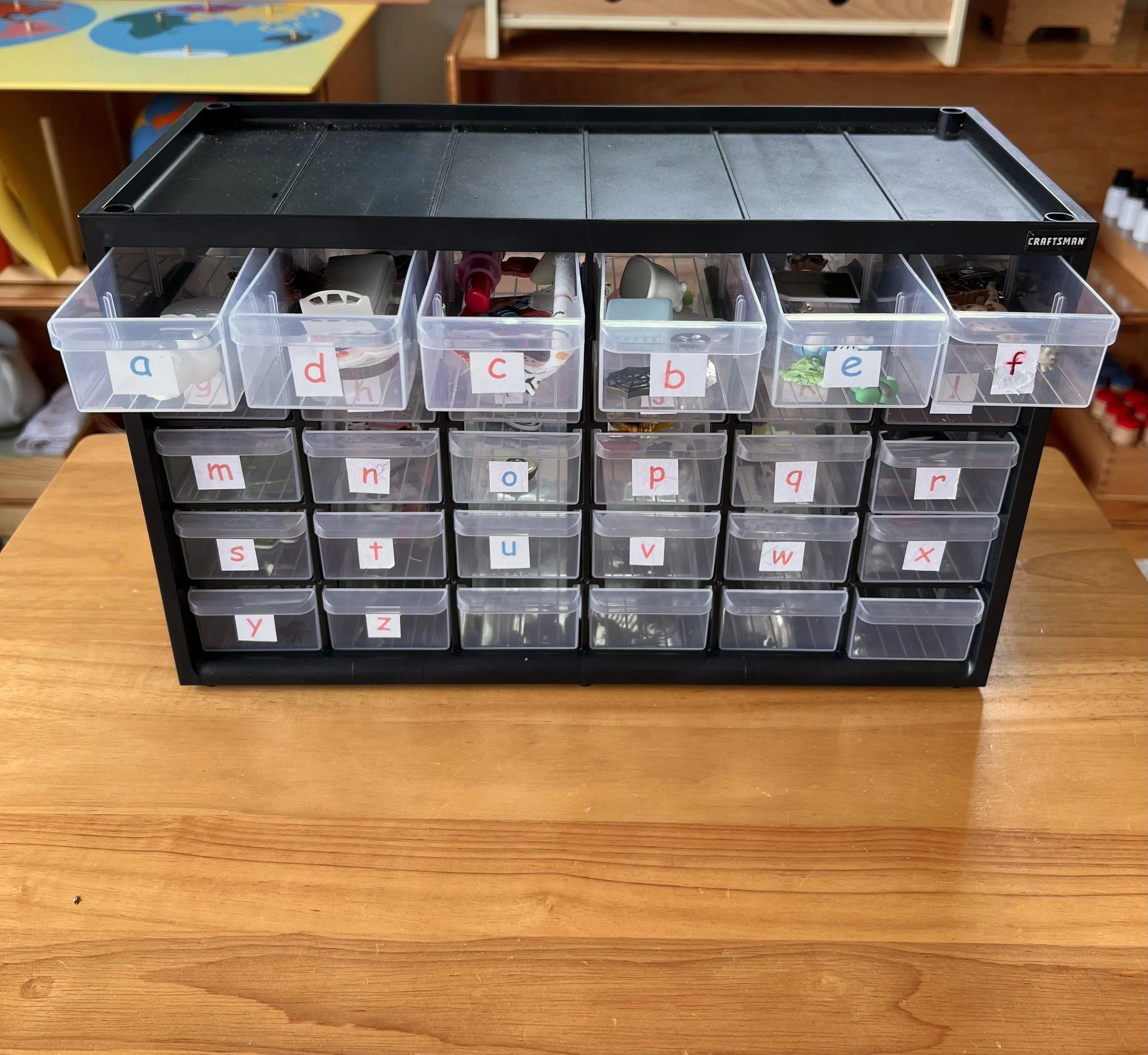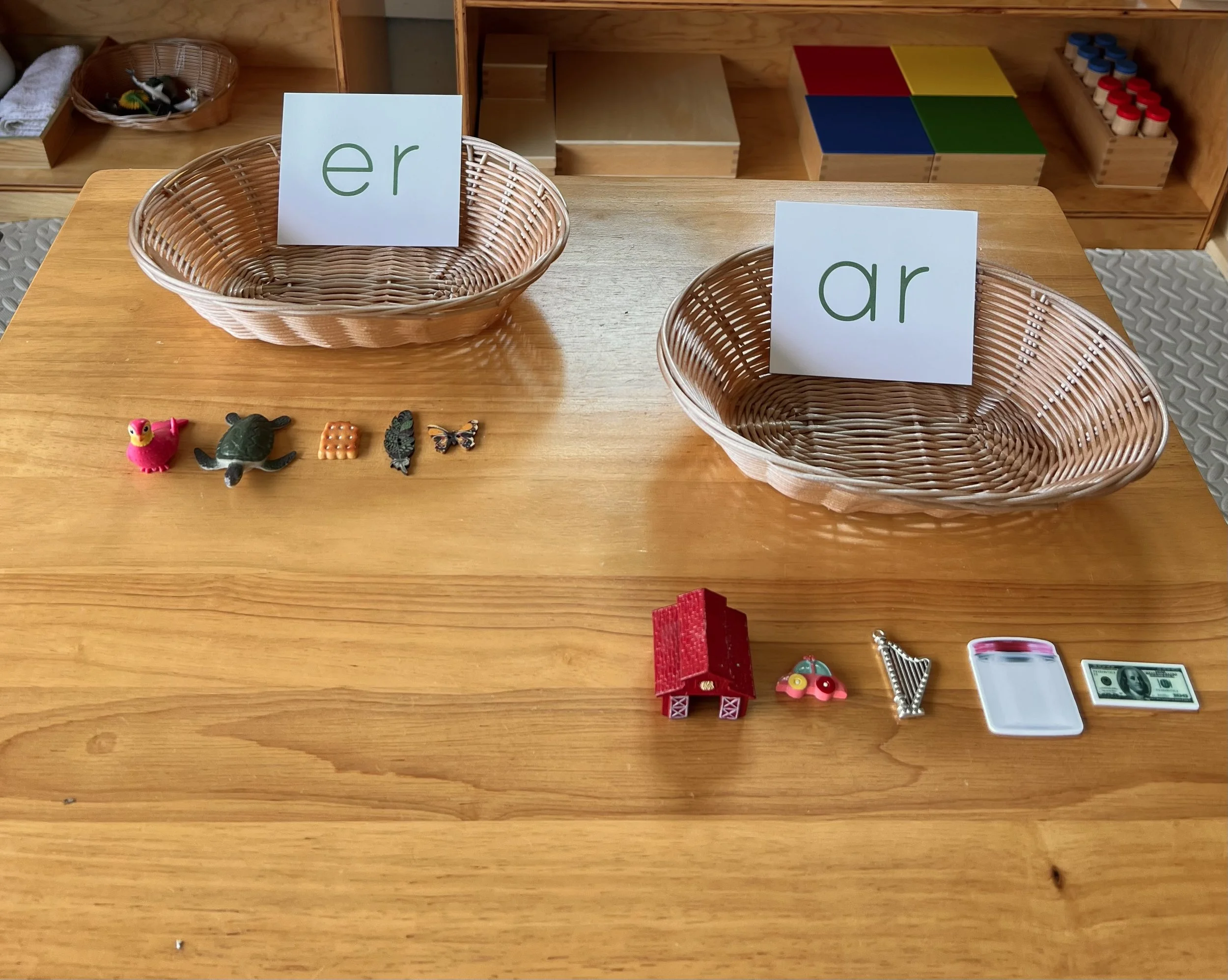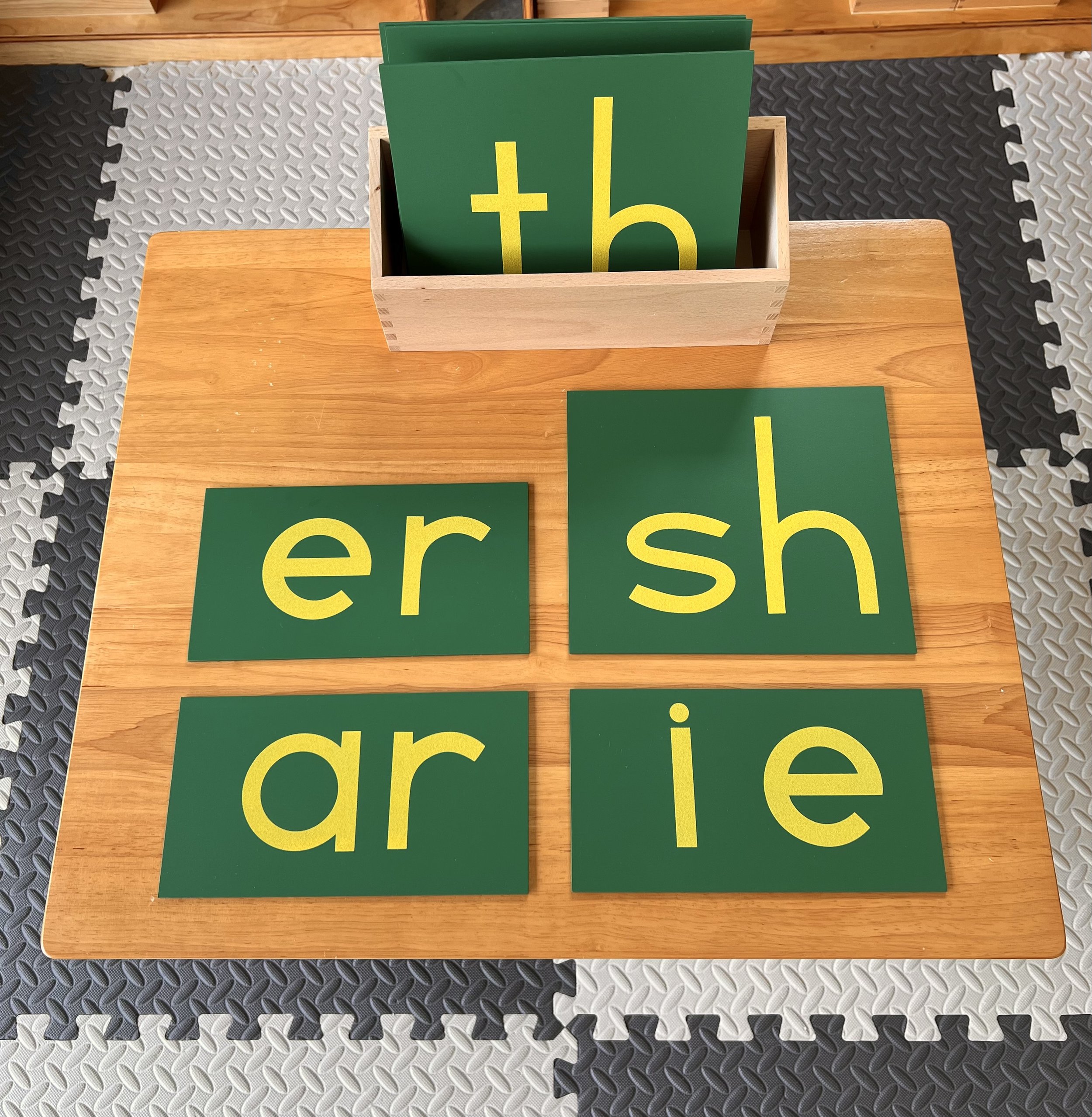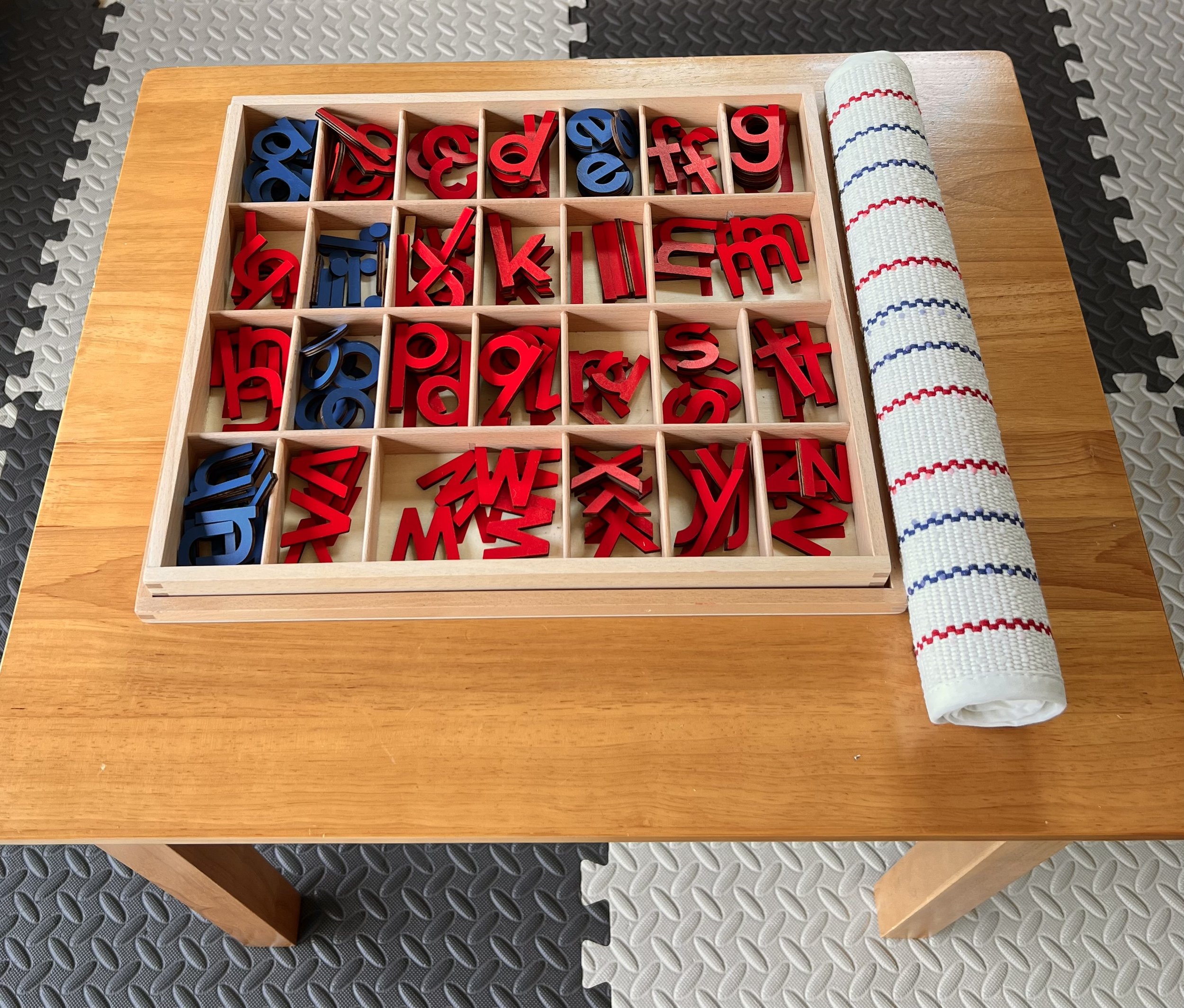Language Arts
In Montessori education, the Language area is designed to help children develop listening, speaking, writing, and reading skills through hands-on, engaging experiences. Working with activities such as the sounds baskets, metal insets, sequencing, classification, and vocabulary exercises allow children to explore the building blocks of language at their own pace. By combining sensory exploration with purposeful practice, children strengthen their communication skills, develop confidence, and build a solid foundation for literacy and lifelong learning.
Our Language area provides children with a wide variety of opportunities to develop their language skills, beginning with oral language and progressing through to writing and eventually reading and the more technical parts of speech, punctuation, and other grammatical skills. Each skill builds naturally on the last, becoming more advanced over time. Below are some of the materials we use to support this journey. Please note that, as a class, we are currently working on oral language and basic writing skills, and so the materials shown will reflect that.
In our classroom
Sound pouches are an engaging way to support oral language development by targeting beginning sounds. Each pouch contains 3 to 5 miniature objects and is matched to a folder with the same sound. Working with these objects makes abstract sounds concrete and memorable through hands-on exploration. This activity also helps build vocabulary, strengthens auditory discrimination, and prepares children for writing and reading by connecting sounds to meaningful objects.
Building on the work of the sound pouches, which focus on beginning sounds, the sound tubs extend oral language development by emphasizing ending sounds. Each tub contains 3 to 5 miniature objects which give children a concrete, playful way to explore how to words finish. Through repetition and discovery, children gain confidence in hearing and identifying sounds, laying a strong foundation for early writing and reading.
Together with the sound pouches (beginning sounds) and the sound tubs (ending sounds), the sound baskets complete the word-building journey by introducing digraphs. Each basket contains carefully chosen miniature objects that highlight common digraphs, helping children recognize how two letters work together to form a single sound. This step strengthens phonemic awareness beyond single sounds and guides children toward more advanced reading and spelling patterns.
Sandpaper letters, including single letters (red consonants/blue vowels) and digraphs (green), give children then opportunity to move from oral language into writing practice. After working with sound pouches for beginning sounds, sound tubs for ending sounds, and sound baskets for digraphs, children already have a strong foundation in hearing and identifying sounds through concrete objects. The sandpaper letters connect these sounds to their written symbols, engaging both sign and touch as children race the letters while saying their sounds.
The movable alphabet is the natural next step after the sound pouches, sound tubs, sound baskets, and sandpaper letters. Having developed strong oral language and sound-symbol recognition, children are now able to use the movable alphabet to build and record short words and phrases, placing the letters on a specialized mat with lines for writing. This bridges the gap between spoken language and written expression, allowing children to compose with confidence even before their hands are fully prepared for pencil work.
After exploring the movable alphabet, where children compose short words and phrases on a lined mat, the metal insets offer the next step in developing the physical skills for writing. Using metal insets, children trace geometric shapes with a pencil, building control, precision, and hand strength necessary to form letters neatly on paper. This activity complements their language work by connecting the mental act of word composition with the physical ability to write. Additional fine motor skills, such as cutting with scissors, can be integrated alongside the insets, further preparing children’s hands for fluent, confidence writing while supporting overall coordination and dexterity.
Sequencing activities provide a valuable supporting skill for oral and writing development, as well as preparation for reading. Children practice putting steps in logical order, such as pouring water from a pitcher into a glass or tracing the growth stages of a flowering plant. each card set includes numbered stickers on the back as a built-in control of error, allowing children to independently check their work and develop self-correction skills. By organizing actions and events in a clear sequence, children strengthen their ability to retell stories, write coherent sentences, and follow narrative structure, laying an important foundation for reading comprehension and expressive writing.
Classification activities complement sequencing by strengthening children’s thinking skills in ways that support oral and written language, as well as early reading readiness. In this activity, children for pictures of objects according to write they belong, such as the kitchen or the bedroom, developing their ability to group and categorize information logically. Like the sequencing cards, this set includes. a built-in control of error, allowing children to check their work independently and refine their reasoning skills. By practicing classification, children enhance vocabulary, build connections between words and meanings, and develop the cognitive organization needed for telling stories, composing sentences, and understanding written texts.
Of course, our language area would not be complete without our cozy reading area. This area brings together the many skills children have been developing through their oral language and written activities. After practicing sounds with pouches, tubs, and baskets, connecting them to symbols with sandpaper letters, composing words with the movable alphabet, strengthening fine motor control with the metal insets, and organizing thoughts through sequencing and classification, children are reading to see these skills come alive in books. The mix of fiction and nonfiction titles connects directly to classroom concepts, such as plant and animal groups or countries and continents, while also reinforcing vocabulary, comprehension, and story telling. With comfortable chairs that connect into loungers, this space provides a calm, engaging environment where children can experience the joy of reading while continuing to build on the strong foundation of oral, language, and writing development established throughout the classroom.


